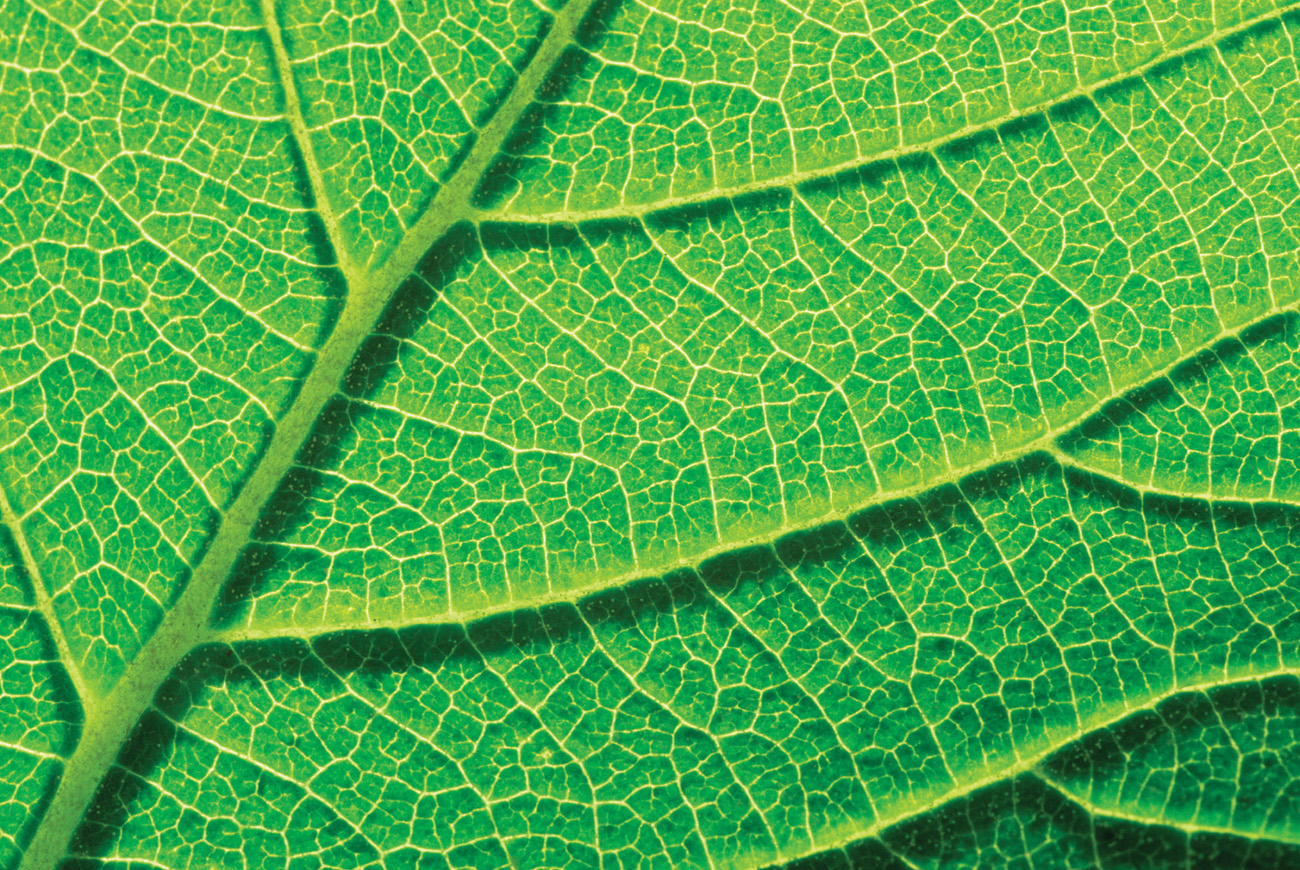CHAPTER 29 INTRODUCTION
CORE CONCEPTS
29.1 The evolution of land plants from aquatic ancestors introduced a major challenge for photosynthesis: acquiring CO2 without losing excessive amounts of water.
29.2 Leaves have a waxy cuticle that retards water loss but inhibits the diffusion of CO2, and pores, called stomata, that regulate CO2 gain and water loss.
29.3 Xylem allows vascular plants to replace water evaporated from leaves with water pulled from the soil.
29.4 Phloem transports carbohydrates that support the growth and respiration of non-photosynthetic organs such as stems and roots.
29.5 Roots expend energy to obtain nutrients from the soil.

In the ocean, where life first evolved, organisms are bathed in seawater that mirrors the osmotic concentration of their cells. In contrast, on land, organisms are surrounded by air and are at risk of drying out. Excessive water loss, or desiccation, is a constant challenge for life on land, especially for photosynthetic organisms, which expose large surface areas to the air in order to obtain sunlight and carbon dioxide (CO2). In Chapter 27, we saw that land plants evolved from aquatic green algae. What structural and functional innovations enabled plants to colonize the land so successfully?
The story begins about 470 million years ago, when a lineage of green algae began the transition from water to land. There are few fossils to show us what the first land plants looked like. We know they were small, at most only a few centimeters tall. These early colonists resembled their algal ancestors; they had no means of obtaining water from the soil and, at best, only a limited capacity to restrict water loss from cells. Therefore, their water content and their ability to carry out photosynthesis would have fluctuated wildly.
Today, descendants of those first land plants dominate terrestrial habitats, having evolved the ability to draw water from the soil and limit water loss from their leaves. These are the vascular plants, and their evolution transformed the physical and biological environment on land. Vascular plants can carry out photosynthesis even when the soil surface is dry and can sustain the hydration of photosynthetic leaves elevated as much as 100 meters into the air. In many ways, the capacity to control the gain and loss of water made possible the extraordinary evolutionary success of vascular plants.